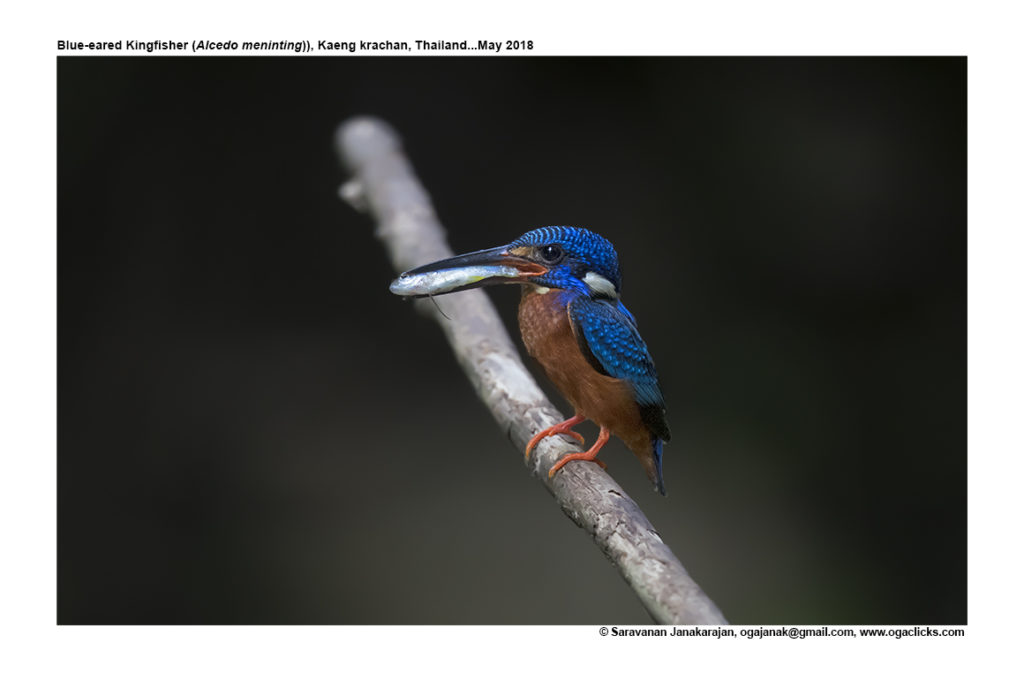Blue-eared Kingfisher

Blue-eared Kingfisher Alcedo meninting
Etymology:
- Alcedo : Latin word for Kingfisher
- Meninting : Javanese name for the Deepblue Kingfisher
Vernacular Names : Hindi: Nilkarna kilkila, Mar: Nilya Kanacha Dhivar
Distribution in India: Resident of Himalayan foothills, North East, East and South West India.
Description: Size of 15·5–17 cm; Wt. of 16–23 g. The male of nominate race has a rufous frontal spot, white blaze on side of neck; head and neck are ultramarine-blue, closely banded with darker blue. The upperparts, wings and tail are glossy dark blue, paler band down center of back and rump; whitish chin and throat and rufous underparts. The bill is black with brownish-red base; iris is dark brown; legs and feet are orange-red. The female is redder on mandible, some individuals have entire bill red. The juvenile is duller, has rufous cheeks and ear-coverts, dusky tips to breast feathers, black bill with white tip.
Habitat: It is found in streams, creeks, channels and estuaries in evergreen and wet deciduous forest, bamboo-forest and dense mangroves, regenerating and tall secondary forest, forest edge, and occasionally found at streams through tree plantations. It is found from sea-level to 1000 m.
Food habits :It eats fish, crustaceans, and insects and larvae and dragonflies. It perches near water, searching for prey with head bobbing and tail flicking. It dives vertically into water and returns to perch with the catch, which is struck on perch before being swallowed head first. Sometimes flies from perch to perch, catching aerial insects.
Breeding habits: They breed in May–Jun in North India, Jun–Sept in Maharashtra, Jan in Kerala, Apr–Jul in Myanmar, May–Jun in Peninsular Malaysia, Jan–Jul in Andaman, Apr in Sumatra, Dec–Aug in Borneo, Mar–Jun and Oct and Dec in Java. Some pairs are double-brooded in India. The nest is dug in sloping or vertical earth bank, soil dump or road cutting, always in forest and near stream. They lay a clutch of 3–7 eggs. Both the sexes incubate and both parents feed the young. Incubation period is 20–23 days. The fledging period is 20–27 days.